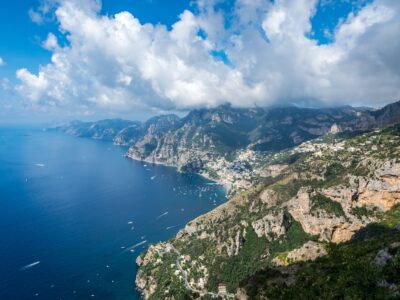Highlights of Italy and Greece: Rome, Florence, Venice, Athens, Mykonos, & Santorini – 21 Days
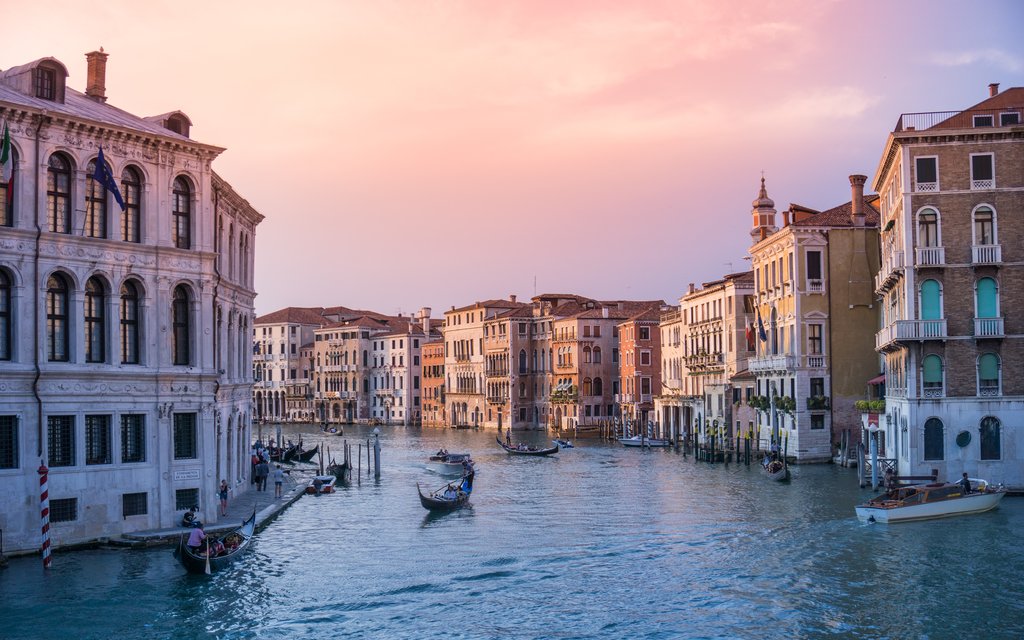
From Rome’s ancient center to the stunning caldera of Santorini, this 21-day highlights itinerary explores everything from Renaissance history to famed Greek beaches. See Michelangelo’s “David” in Florence, visit Tuscany’s quiet hilltop villages, and explore ancient Greek archaeological sites in Athens. You’ll sample Aperol Spritzes in Venice, eat spelt pie in Santorini, and more on this three-week adventure around the Mediterranean.
Highlights
- Explore the Colosseum and the Vatican
- Take a trip on a gondola through the waterways of Venice
- See the renowned Acropolis in Athens
- Take in sunset views of the Aegean in Mykonos
- Go wine tasting on the volcanic hillsides of Santorini
Brief Itinerary
| Day | Highlights | Overnight |
|---|---|---|
| Day 1 | Arrive in Rome & City Walking Tour | Rome |
| Day 2 | Colosseum & Ancient Rome Tour | Rome |
| Day 3 | Free Morning in Rome & Evening Aperitivo Tour | Rome |
| Day 4 | Vatican & Sistine Chapel | Rome |
| Day 5 | Rome to Florence, Food & Wine Tour | Florence |
| Day 6 | Walking Tour of Florence’s Highlights | Florence |
| Day 7 | Tuscany Day Trip: Siena, San Gimignano, Monteriggioni, & Chianti | Florence |
| Day 8 | Train from Florence to Venice | Venice |
| Day 9 | Venice Walking Tour & Afternoon Spritz Veneziano | Venice |
| Day 10 | Murano & Burano Excursion | Venice |
| Day 11 | Flight from Venice to Athens | Athens |
| Day 12 | Guided Acropolis Visit | Athens |
| Day 13 | Sunset Tour of Cape Sounion & Temple of Poseidon | Athens |
| Day 14 | Athens to Mykonos & Traditional Mykonian Dinner | Mykonos |
| Day 15 | Day Trip to Delos | Mykonos |
| Day 16 | Mykonos Beach Day | Mykonos |
| Day 17 | Mykonos to Santorini | Santorini |
| Day 18 | Santorini Tour & Wine Tasting | Santorini |
| Day 19 | Santorini Wineries & Vinsanto | Santorini |
| Day 20 | Catamaran Cruise in the Caldera Lagoon | Santorini |
| Day 21 | Santorini to Athens – Depart Athens |
Detailed Itinerary
Day 1: Arrive in Rome & City Walking Tour
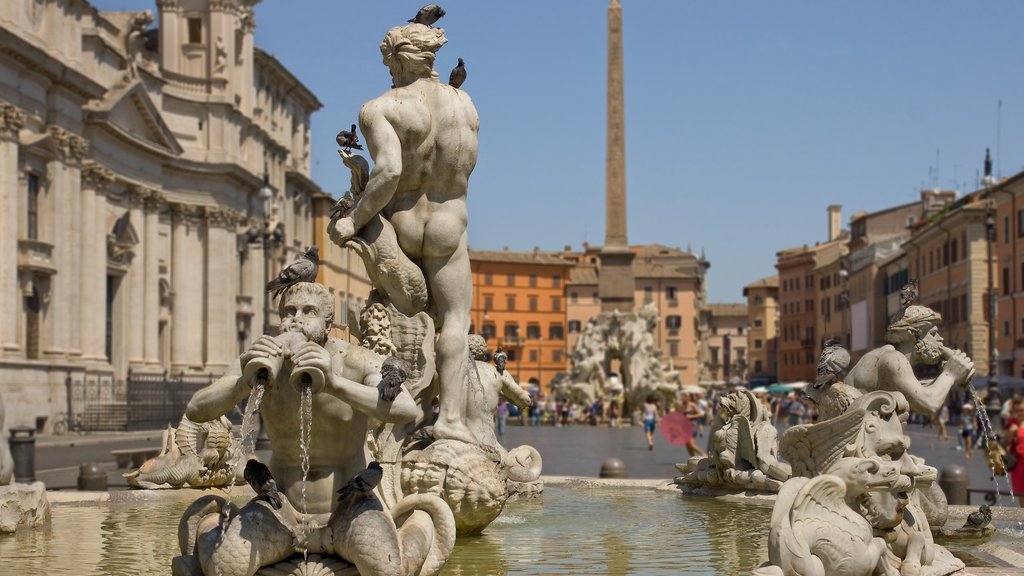
Welcome to Rome, known as the Eternal City! According to legend, Rome was founded by brothers Romulus and Remus in 753 BCE atop Palatine Hill. As the long-time center of the powerful Roman Empire, you’ll find nearly 3,000 years of architecture, history, and culture throughout the city.
After arriving at one of Rome’s airports, you’ll transfer to your hotel in the historic center. Settle in and relax, then head out for a small group walking tour and your first look at the city.
The tour will take you to some of Rome’s top historical and cultural sites, winding through narrow streets and wide piazzas as you explore the city. You’ll learn about Rome’s role as Italy’s political capital, as well as the city’s importance as the cradle of Catholicism.
Start at the Spanish Steps, then enter the tangle of narrow streets in Centro Storico, one of Rome’s most historic districts, to see classical Roman and baroque architecture. Along the way, your guide will recount stories and historical anecdotes of the many little fountains, important buildings, and hidden piazzas that are tucked away in every corner of this magnificent city. As you weave in and out of the old city’s labyrinth, you’ll emerge in front of the Pantheon — ancient Rome’s only intact Pagan temple.
Your next stop is the Trevi Fountain, where travelers throw coins into the water that according to legend ensure a return to Rome. Take a break at the neighborhood gelateria for the perfect cone of gelato, then conclude your tour at the Piazza Navona, one of Rome’s most well-known squares. It sits on top of the former 1st-century Stadium of Domitian which once hosted chariot races and other competitive athletic events (the stadium could even be flooded to recreate naval battles!) The modern-day piazza follows the curve of the stadium’s original outline, and traces of the original walls still stand on its outskirts. The 17th-century Chuch of Sant’agnese in Agone, designed by Borromini, marks the spot where the Christian martyr St. Agnes was murdered in 304 CE.
In the center of the square stands the Fountain of the Four Rivers (Fontana dei Quattro Fiumi), which was designed by Gian Lorenzo Bernini, a leading Italian sculptor. Find a quiet bench in the piazza and enjoy a relaxing evening of people watching and enjoying Rome’s many talented sidewalk artists and musicians before making your way to a family-owned pizza shop for dinner.
Day 2: Colosseum & Ancient Rome Tour
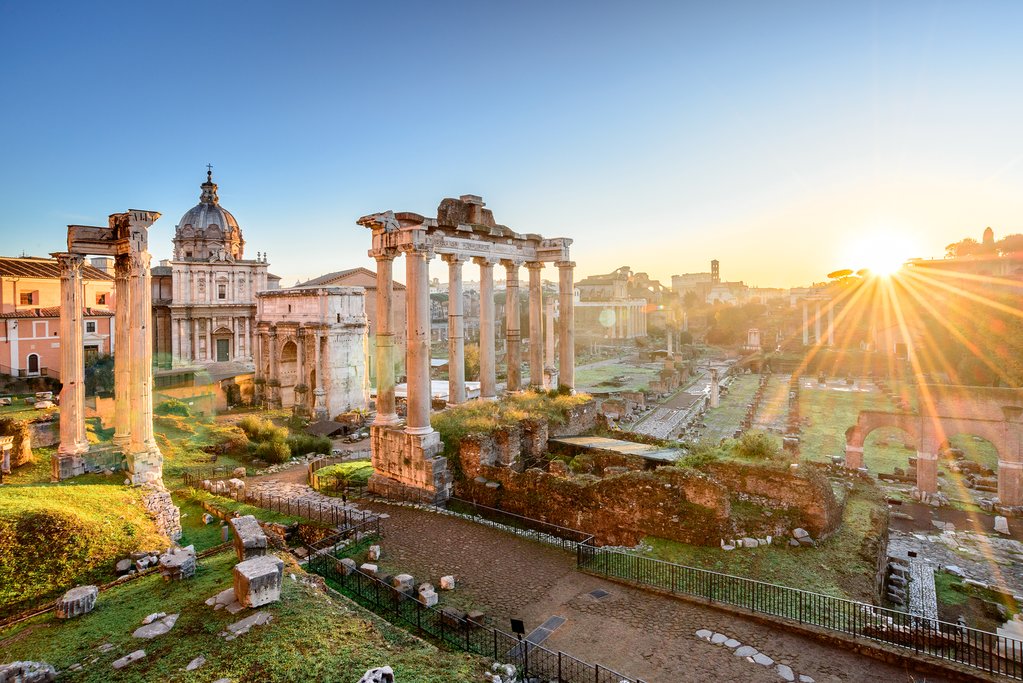
Dive into the history of the Roman Empire with a walking tour of the Colosseum, the world’s largest amphitheater. Learn about the lives of some of ancient Rome’s most famous and illustrious citizens, such as Julius Caesar, Emperor Augustus, Nero, and the Flavian Emperors who built the Colosseum.
Continue to the Roman Forum, where you’ll see excavations dating back 2,000 years, revealing the ruins of temples, squares, religious sites, and other buildings. These were the venues for public speeches, processions, elections, and, of course, gladiator matches. Historians and archaeologists refer to the Roman Forum as one of the most celebrated places in world history, and you’ll see why as you explore the grounds.
Cut through the Roman Forum along Via Sacra, where you’ll pass by the Temples of Vesta, Antonino, and Faustina. The Basilica Julia and Aemilia, a public meeting house that was commissioned by Julius Caesar, is also here.
Your tour of ancient Rome ends 131 feet (40 meters) above the city at Palatine Hill. From here you’ll have incredible city views, with the Forum on one side, Circus Maximus on the other, and the Vatican in the distance. In between, the River Tiber snakes through Rome’s historic neighborhoods.
In the evening, you’ll have free time to continue exploring Rome. Grab dinner in one of the city’s other neighborhoods, such as bohemian Monti, and enjoy the quiet hum of city life as the day comes to a close.
Day 3: Free Morning in Rome & Evening Aperitivo Tour
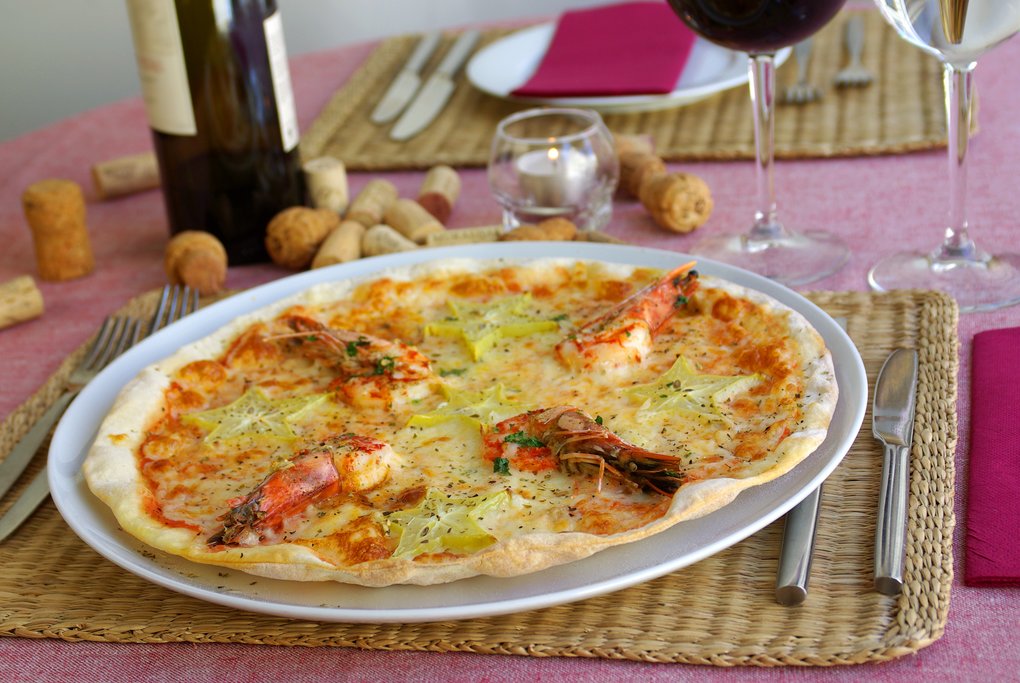
Today, you have a free morning to explore Rome on your own.
Some suggested activities include:
- Visit the Museo Nazionale di Castel Sant’Angelo history museum
- Tour the Renaissance-era Villa Farnesina in the Trastevere district
- View art in the Palazzo Colonna – Galleria Colonna and Palazzo Doria Pamphilj
- Go for a stroll in the buzzing Monti neighborhood, an eclectic area in the city center full of hip wine bars and trendy boutiques
- Head out of the city for a day at the Ostia beach for miles of sand and warm sea
- Explore the Musei Capitolini, the oldest and one of the best museums in Italy
Enjoy a light lunch, as you are going to spend your evening eating and drinking your way through Rome’s phenomenal food scene. Start with a guided walking tour of the Piazza Campo de’ Fiori, known for its bustling open-air markets and striking hooded statue which looms over the market stalls. Shop for local cheeses, cured meats, fresh vegetables, and seafood fresh from the coast.
From here head to Trastevere, a colorful bohemian neighborhood with a working-class history. This area is located on the opposite side of the Tiber River. Head to the Piazza di Santa Maria, a lively meeting area, to order pizza to go. Enjoy your pizza in the sunny piazza while your guide explains the origin of the Margherita Pizza (named after Margaret of Savoy), then continue the walking tour to try some supplì, delicious rice balls with cheese and tomato sauce.
Afterward, head to the most popular ice cream parlor in Trastevere to enjoy gelato for dessert. Wrap up the night with a wine tasting in a traditional trattoria, accompanied by an assortment of cheeses and prosciutto.
Day 4: Vatican & Sistine Chapel
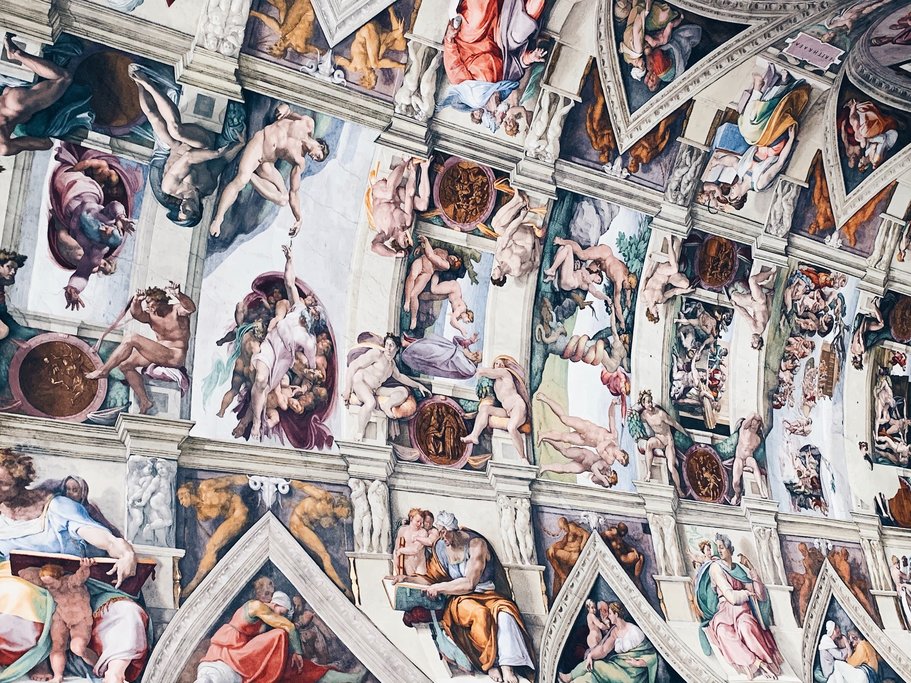
Today, you will visit the Vatican Museums and Sistine Chapel, as well as other top sights, with a 3-hour guided tour. The Vatican is not only rich in history, but also in art, housing some of the most important Renaissance masterpieces in the world. You’ll start by visiting the Pio Clementio Museum, the Gallery of the Candelabra, the Gallery of Tapestries, and the Gallery of the Geographical Maps.
Continue to see the magnificent Raphael Rooms, ending in the breathtaking Sistine Chapel to see Michelangelo’s Genesis ceiling frescoes and his Last Judgement altar fresco. Continue to St. Peter’s Basilica and Square and experience the magic of Renaissance art as you learn about the secret details and untold stories of the masterpieces.
Your afternoon is free to explore the city. If you haven’t already, it’s worth seeing the world-famous Galleria Borghese, which houses works by Bernini, Caravaggio, Canova, and Rafaello. The gallery’s highlights include sculptures and paintings from Cardinal Scipione Borghese’s collection (1579 – 1633). Rafaello’s “Entombment of Christ” is also a must-see.
End your afternoon with a peaceful stroll around the Villa Borghese gardens, enjoying the beauty and calm just steps away from the chaos of the city.
Day 5: Rome to Florence, Food & Wine Tour
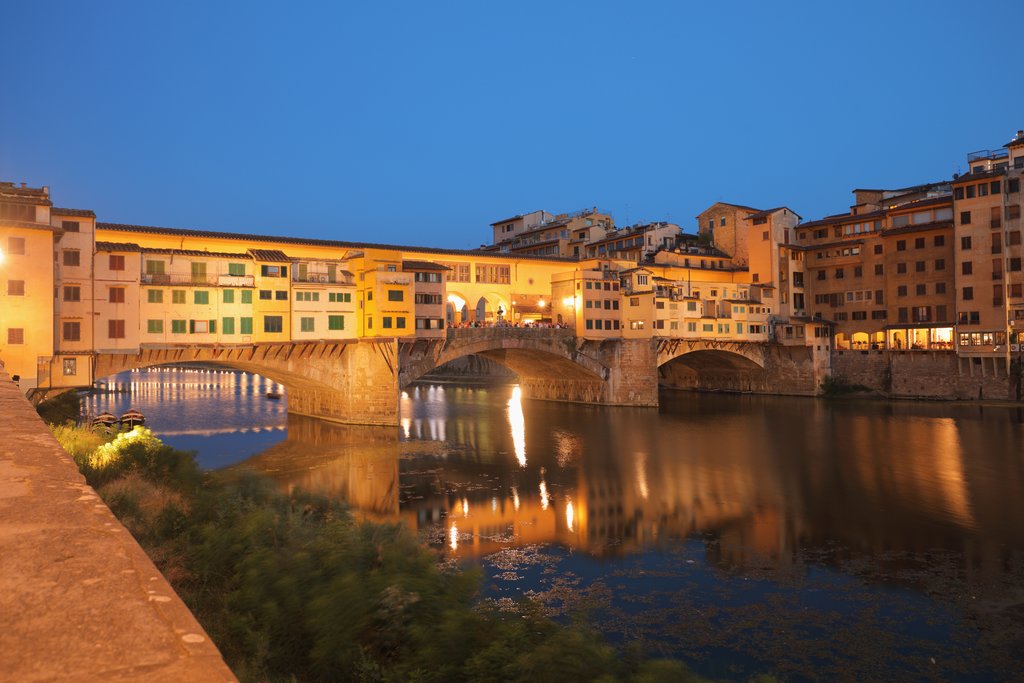
In the morning, transfer by high-speed train to Florence, an artistic and romantic city in the heart of Italy’s Tuscany region.
Florence is home to many masterpieces of Renaissance art and architecture, including the iconic Duomo with its terracotta-tiled dome, and the Galleria dell’Accademia, which displays Michelangelo’s ‘David’ sculpture. Make the most of your morning with some of the following suggestions:
- Head to Studio Artemisia, located steps away from the Ponte Vecchio, for a class in ancient fresco painting techniques
- Visit the Chiesa e Museo di Orsanmichele, which served as the granary for the Sisters of San Michele in previous years
- Take a walk through the peaceful Boboli Gardens to see the oval-shaped Isolotto, a small island surrounded by various sculptures and lots of greenery.
If you prefer to explore a city’s culture through its food, opt for a half-day food tour.
Head to Piazza Mattei where you’ll meet your local culinary expert and start things off with a traditional Italian aperitif at a quintessential wine bar. Sample Tuscany’s finest red wines and enjoy a plate of charcuterie while your tour guide delves into the history of Italian food and the significance of sharing a meal with family and friends.
From here, continue to the 16th century Jewish Quarter, formerly the Jewish Ghetto, known for its historic importance and tasty eats. Before sitting down to eat, take a quick walk around the area as you learn about the historical and cultural significance of this neighborhood, which was established by the Medici family as a real estate venture. After your tour, enjoy local appetizers like fried artichokes.
Close the food tour with a plate of Italy’s famous pasta. Head to a local family-owned restaurant for an in-depth exploration of the different pasta shapes, cooking styles, and sauce pairings. Round out the meal the Italian way — with gelato and a strong coffee.
Day 6: Walking Tour of Florence’s Highlights
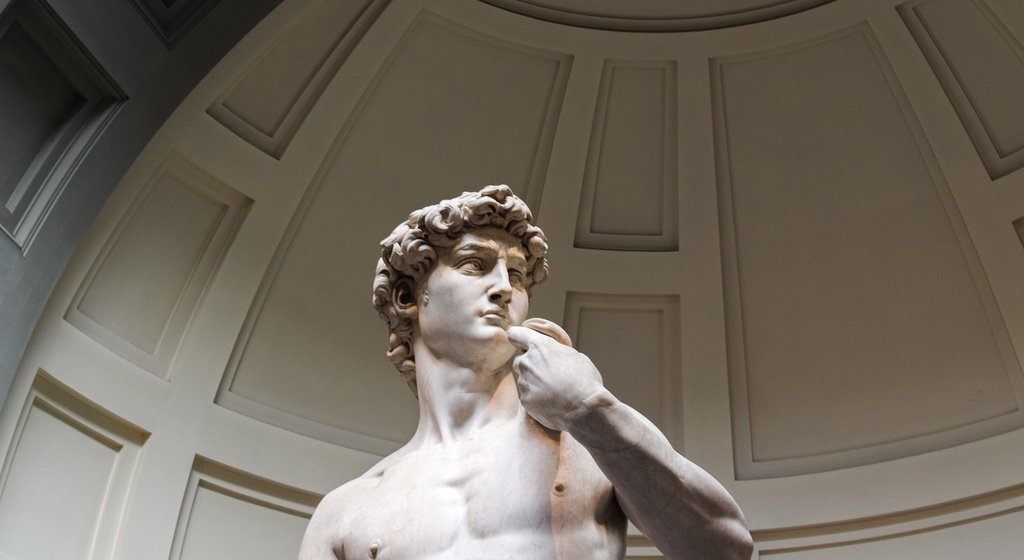
Spend the day touring the city’s highlights with an art historian on a guided walking tour. Long considered a cultural capital and the “Jewel of the Renaissance”, Florence is home to many masterpieces of art and architecture from that era which you’ll have the opportunity to experience today.
Start in the medieval city center in the Piazza della Repubblica, one of the city’s main squares. It has marked the city center since Roman times. See the Colonna della Dovizia, also known as the Column of Abundance, that marks the point where the cardus (north-south oriented road) and decumanus maximi (east-west oriented road) met and also where the Roman forum stood.
Continue to the Piazza della Signoria, the city’s political center since the Middle Ages, where ceremonial events, rallies, and festivals are celebrated. Here you’ll find several iconic Florentine landmarks—Palazzo Vecchio and the Uffizi Gallery, which houses works by Michelangelo and Leonardo da Vinci. The square’s centerpiece is the Neptune Fountain, a popular meeting place. Your tour today includes skip-the-line tickets to the Uffizi Gallery, which houses works by Botticelli & Raffaello.
See the Ponte Vecchio bridge, a symbol of Florence’s power for over seven centuries. The bridge houses buildings and shops which have been occupied by merchants and shopkeepers since the Middle Ages. Arrive at the Italian Gothic Cathedral of Florence and climb the 400+ steps to reach Giotto’s bell tower. Enjoy a private and exclusive visit to the Cathedral Terraces, which perch high above the city traffic and are generally closed to the public. From here you’ll have a birds-eye view of the whole city.
The final stop of the day is the Galleria dell’Accademia, where you’ll enjoy priority skip-the-line access to view Michelangelo’s “David” and other masterpieces of Renaissance sculpture.
If you’ve made prior arrangements, head to Enoteca Pinchiorri, Florence’s 3-star Michelin restaurant, for a luxurious dinner option, then stroll through the city on your way back to the hotel.
Day 7: Tuscany Day Trip: Siena, San Gimignano, Monteriggioni, & Chianti
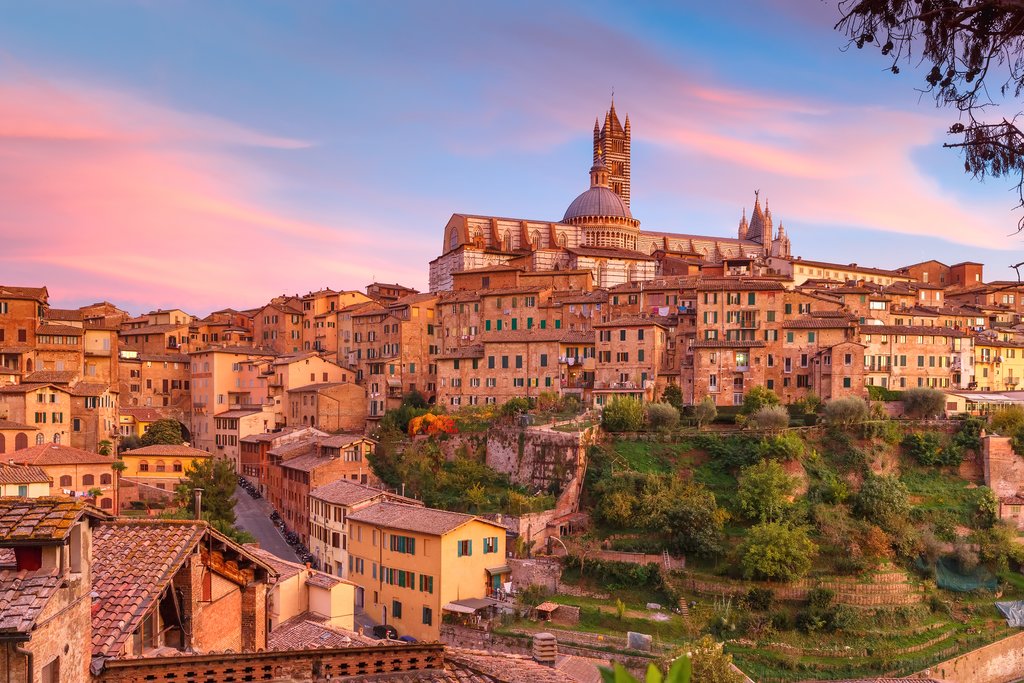
In the morning, you’ll head to the countryside to explore Tuscany. Your first stop will be the medieval village of San Gimignano, a UNESCO World Heritage Site an hour away from Florence. San Gimignano is known for its unique towers that dominate the village skyline. In the Middle Ages, noble families built these as symbols of their wealth and status. While most of these towers across Tuscany were torn down when the villages came under Florentine control, a number of San Gimignano’s were left standing. Explore the beautiful squares, palaces, and churches of the city before taking a break with a coffee in a terraced cafe.
In the afternoon, you’ll visit nearby Siena, a medieval city brimming with historic sites. You can’t miss the incredible main square, Piazza del Campo, which is surrounded by the Gothic Pubblico Palace, the Tower of Mangia, and the Gaia Fountain. From here, walk over to the 13th-century cathedral, Duomo di Siena, which dominates the skyline of the city. In the summer months, the town comes alive with festivities, as the Palio takes place in July and August. This exciting horse race, held twice a year in the main square of Siena, ignites the town in a fervor.
Finish the day with a visit to the medieval fortress town of Monteriggioni. Intact castle walls still surround this town perched on a hillside, and are a sight to behold. Continue on to the Chianti Classico wine region to visit a typical Tuscan winery before returning to Florence for the evening.
Chat with a local specialist who can help organize your trip.
Day 8: Train from Florence to Venice
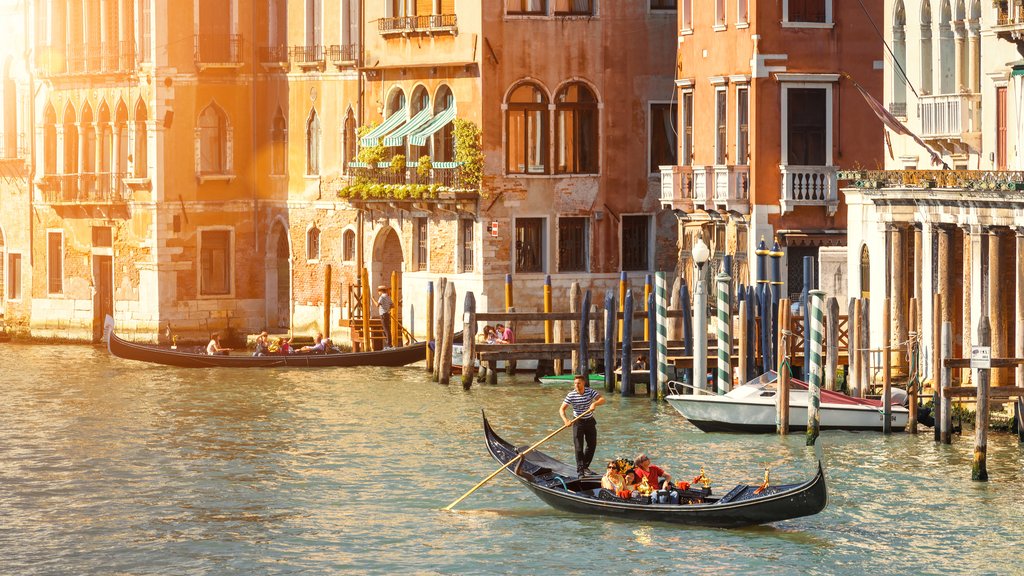
Time to say goodbye to Florence. Head to the train station and catch your high-speed train en route to Venice, usually about a 2-hour trip. Once in the city, make your way to your hotel and settle in.
Venice in northern Italy is famous for both industry and tourism. With nicknames like “Queen of the Adriatic”, “City of Water”, and “The Floating City”, it’s clear that the city’s myriad canals are its main draw. Stretching across 117 small islands in the marshy Venetian Lagoon along the Adriatic Sea, the city has long been a commercial and cultural hub thanks to its strategic placement. Silk, grains, spices, and art were traded through the Middle Ages, making Venice very wealthy.
The city is also famous for its many beautiful historic attractions, such as the Piazza San Marco and San Marco Basilica, the Grand Canal, and the ornate Doge’s Palace. The Lido de Venezia is a popular luxury destination that attracts actors, critics, and other cinema industry celebrities.
Take the evening to explore the city with a walk through the Cannaregio district. This area of Venice, known for holding the Jewish Quarter, is the perfect place to simply walk and admire the unique, iconic architecture. Cannaregio has plenty of artisanal shops to explore, not to mention a plethora of delicious restaurants and lively bars to stop in for dinner and drinks.
Alternately, take a ride on a historic Venetian gondola, an unmissable experience while visiting the city of water. As unique as Venice itself, the crescent-shaped hulls and traditional forcole of the gondolas allow for a change of perspective as you explore the city from its maze of waterways.
Day 9: Venice Walking Tour & Afternoon Spritz Veneziano
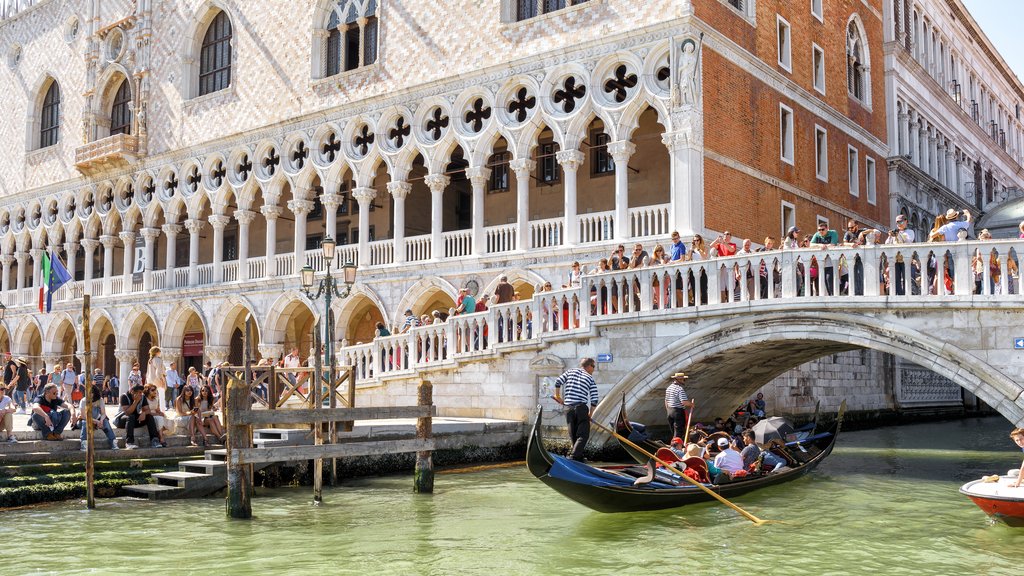
Experience Venice’s highlights with a guided walking tour. Start at Piazza San Marco (St. Mark’s Square), the heart of the city’s cultural and administrative district. Tour Palazzo Ducale (Doge’s Palace), a Venetian Gothic palace built as the primary residence for the Doge of Venice in 1340. The palace stands on Piazza San Marco, and its resplendent interior decor and priceless works of art make it a must-see for history and architecture buffs.
The palace is also connected to the next-door prison by the infamous Bridge of Sighs, which has joined the two buildings since the 16th century. The bridge features a small window onto Venice’s harbor and earned its grisly name from the prisoners’ sighing as they got one last glimpse of the city on their way to execution. While most visitors gather outside the bridge to look in, you’ll get the best sense of history from inside the bridge, looking out from the same window as the doomed medieval prisoners.
Adjacent to the palace is the San Marco’s Basilica, originally the Doge’s personal chapel. The building is one of the best surviving examples of Italo-Byzantine architecture and features a stunning collection of Byzantine art, gold mosaics, and exquisite marble floors. Your tour includes a visit inside, where you’ll be able to see for yourself the incredible art and architecture that the basilica holds.
Away from Saint Mark’s Square, you’ll delve deeper into the heart of Venice and away from the crowds. Grab lunch at one of the city’s many cafes before spending the afternoon exploring Venice through its most well-known cocktail: the Aperol Spritz, also known simply as the Spritz. It’s a mix of prosecco, Aperol, and soda water that makes for the perfect aperitivo highlight.
As the day winds down and Venetians emerge from their offices for the all-important aperitivo, you’ll meet up with your local wine expert to learn about the history and culture of this required afternoon break. Stroll through the colorful piazzas of Venice, pausing at local eateries for a typical post-work Spritz pairing — olives, cheese, polenta, salami, prosciutto, and more.
After the tour, pick one of the many local-recommended restaurants for an evening meal, Venetian-style.
Day 10: Murano & Burano Excursion
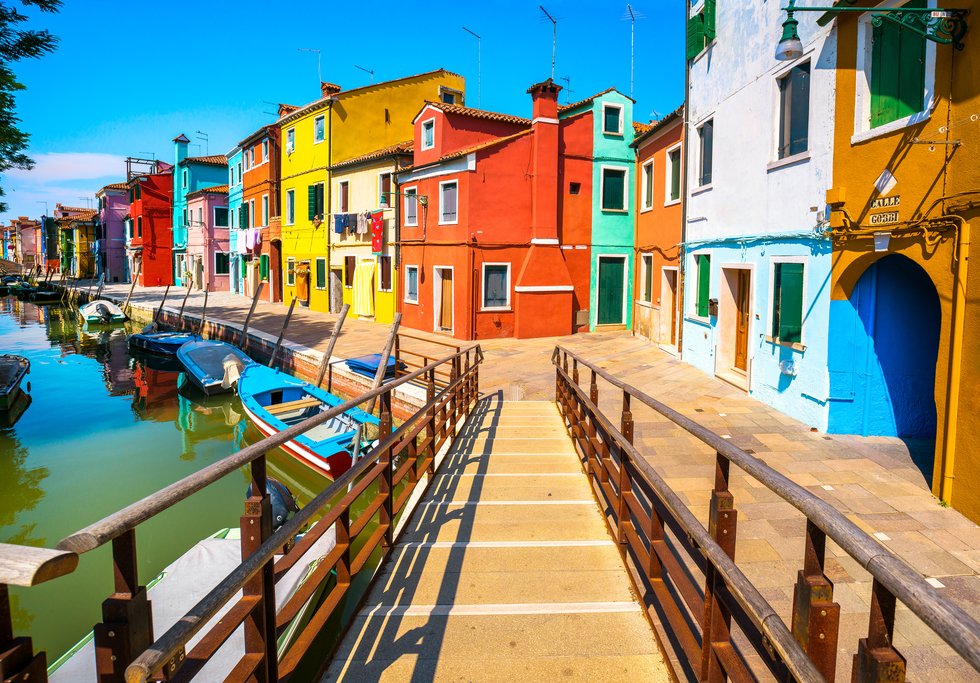
When in Venice, a visit to its lagoon and neighboring islands is a must. These picturesque villages offer a getaway from the city of Venice and a unique look into the local life and culture nearby. This morning, head out for a half-day tour of Venice’s famous neighbors — the islands of Murano and Burano.
Board your motorboat in the center of Venice and make your way first to Burano, about 45 minutes away. Along the way, your guide will offer insights about the spectacular Venetian lagoon and its various islands. Traditionally a quiet fishing village, Burano is known for its exquisite lacemaking and the colorful houses that adorn its canals.
After exploring the island, head to neighboring Murano, famous for its colorful glass-making. Visit a glassblower to see a demonstration and learn about the history of glass-making on Murano. Marvel at the intricate pieces, and peruse Murano’s many local shops to see the numerous forms of this delicate craft for yourself (and bring some home as gifts).
After spending the better part of your morning enjoying the two islands, return to Venice by boat in time for lunch.
In the afternoon, explore Venice on your own with one of these options to make the most of your time:
- Discover art at the Peggy Guggenheim Collection Modern Art Museum and La Biennale di Venezia Art Museum
- See an opera show at the Teatro La Fenice
- Browse textiles, craft shops, unique boutiques, and galleries in the bohemian San Samuele district
Day 11: Flight from Venice to Athens
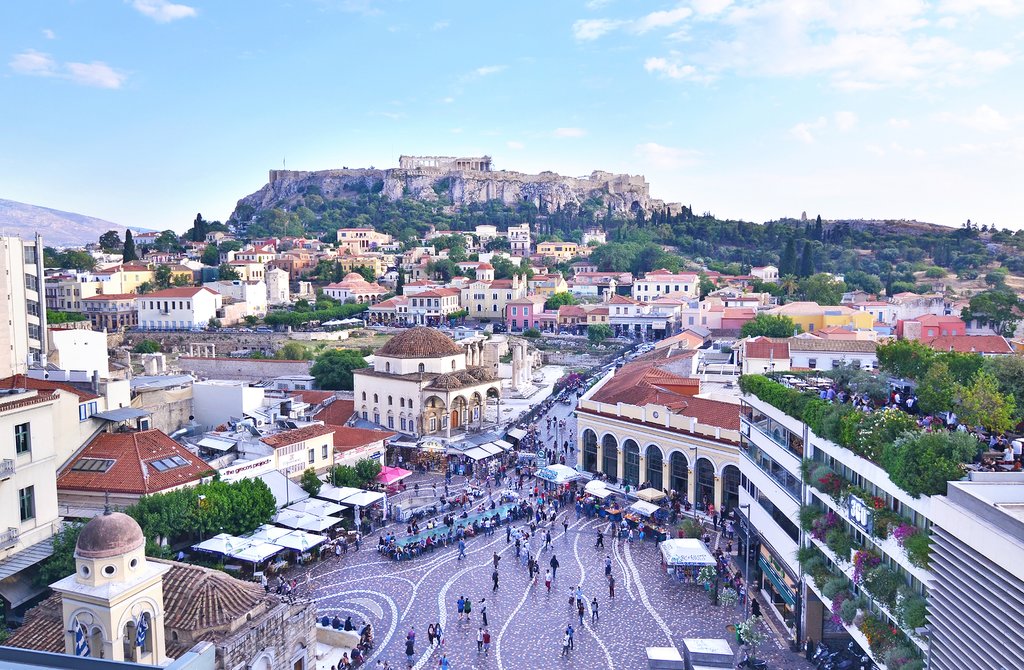
Welcome to Greece! You’ll begin the second half of your trip in Athens, home to the iconic Acropolis and so much more. The mythology of this spectacular city precedes it, with towering temples and the ruins of ancient marketplaces rubbing shoulders with lively nightlife, crowded flea markets, and contemporary cuisine. Make the most of your time in the city at some of these spots:
- Check out the views of the can’t-miss Parthenon. (Pro tip: The Parthenon is the temple, the Acropolis is the hill.) This temple to Athena has enchanted visitors since its construction was completed in 438 BCE. It’s probably the first thing that comes to mind when you think of ancient Greece and is visible from many of the city’s high points.
- Stop at the sprawling National Museum for a crash course in ancient iconography. Be sure to seek out the room housing the Antikythera mechanism, essentially an ancient astronomical computer.
- Visit a smaller archaeological site at the Tower of the Winds, then stroll down neighboring pedestrian Aiolou Street to stop at shops and cafes.
- Find your perfect souvenir or sun hat in the busy stalls of the Monastiraki flea market.
- Spend your evening exploring the up-and-coming Pangrati neighborhood or amid the nightlife and mezze of the Psyrri district.
Day 12: Guided Acropolis Visit
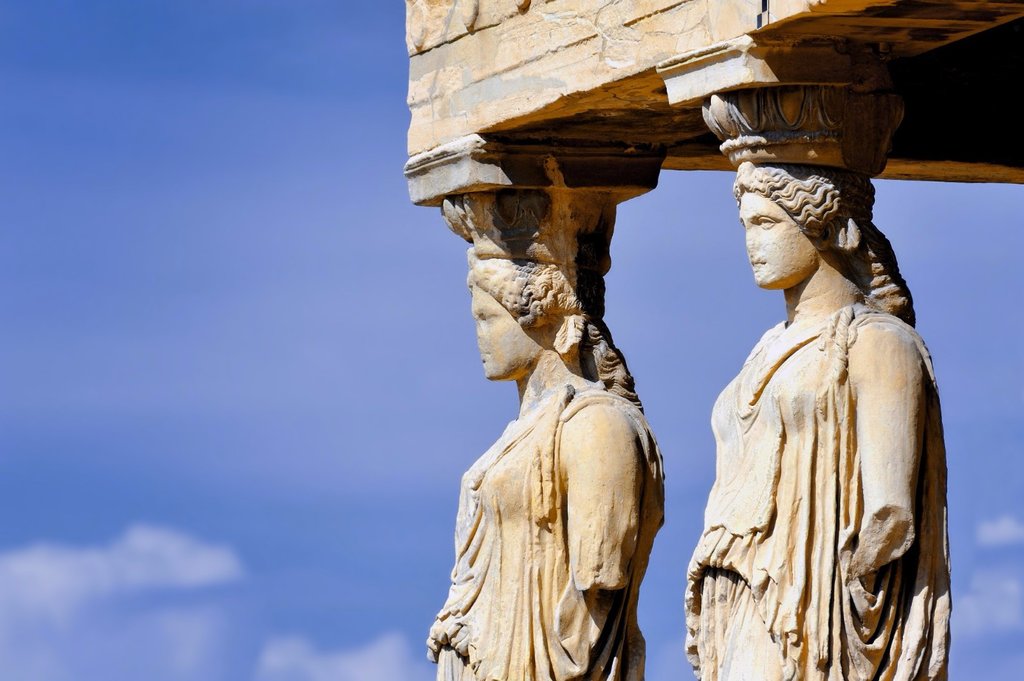
Today you’ll get to experience the mighty Acropolis — ruins of the iconic 5th-century BCE complex located on a rocky hilltop overlooking the city. Take a guided tour of the entire area with a professional guide who will share the stories of the country’s most famous monument. In addition to the iconic Parthenon, dedicated to the city’s patron goddess Athena, you’ll view and learn about the Propylaea, the Temple of Athena Nike, and the most sacred temple of Erechtheion.
Your tickets to the Acropolis will be pre-purchased ahead of time, leaving you with more time to explore the ruins. Your guide will also provide you with an iPad, which you can use to view the augmented reality displays of the buildings’ original splendor in 3D.
Complement your tour with a trip to the nearby modern Acropolis Museum. Many of the more delicate statues and other artifacts originally found at the Acropolis have been moved here, but you can imagine them in their previous home as you explore the exhibits. Complete your visit with a stop in its cafe for either lunch or a relaxed snack and coffee.
After lunch, head to the historic neighborhood of Plaka to wander down its many cobbled streets and enjoy refreshments at a local cafe.
Day 13:
Map
Map of Highlights of Italy and Greece: Rome, Florence, Venice, Athens, Mykonos, & Santorini – 21 Days
T4528

